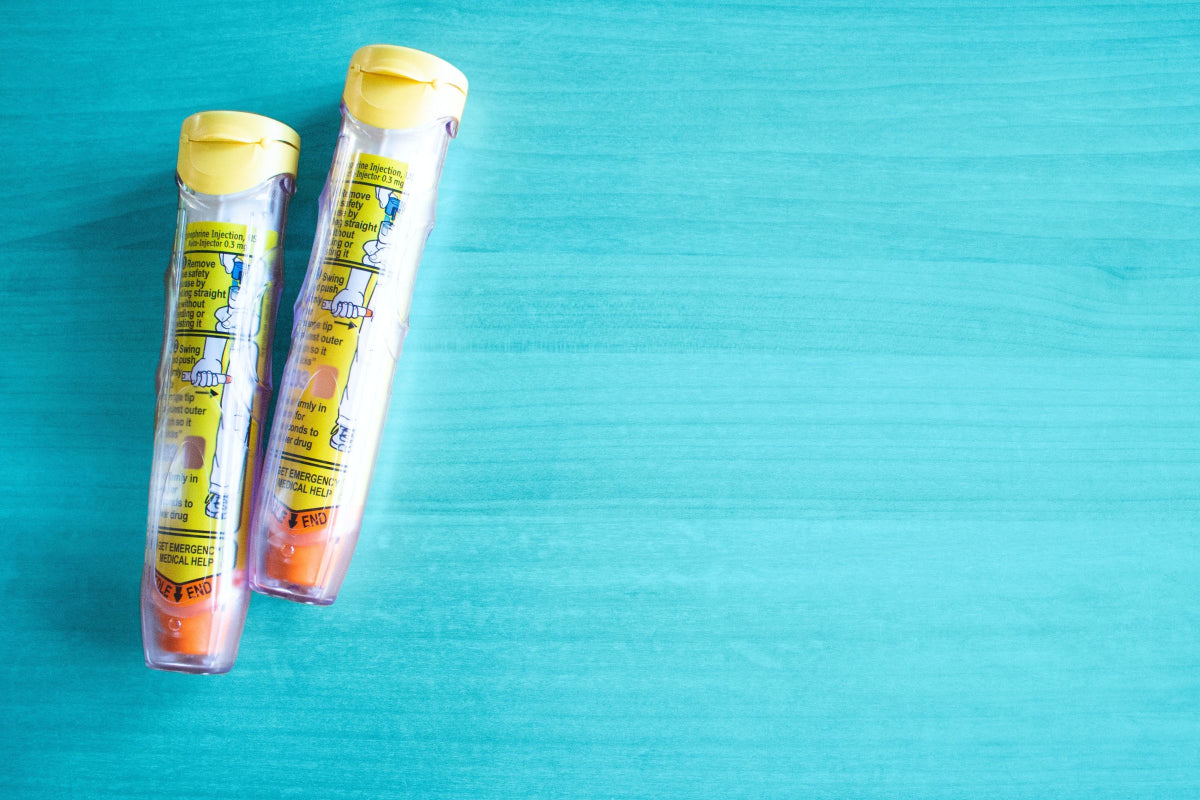
When your child (or you!) were diagnosed with food allergies, your allergist probably handed you a prescription for an autoinjector of epinephrine. Your doctor likely explained when to use the drug and why. You may have, however, been a little overwhelmed by the diagnosis and the glut of information you were given. Words like “life-threatening” and “anaphylaxis” were pulling attention away from the rest of the instructions as you mulled their implications. Now that you’ve had some time to digest the news, you might have questions.
First, let’s be clear: this article will give you a high-level overview. However, you should speak with your healthcare provider regarding specific questions and clarification of your child’s (or your) allergy action plan. You can also find more information from reputable sources like FARE, FAACT, and AAAAI.
What is epinephrine?
Simply put, epinephrine is a form of adrenaline. Your body naturally produces this hormone within the adrenal glands in response to stress. Think of the last time something startled or scared you. Your pulse began to race a little, maybe you felt a little sweaty or a little shaky. Your fight or flight response was kicking in. That’s adrenaline. As a medication, epinephrine is used to treat severe allergic reactions and to prevent anaphylactic shock.
What does it do?
The simple answer is that epinephrine can reverse the symptoms of a severe allergic reaction. More specifically, a severe allergic reaction can mean restricted airways and a drop in blood pressure, as well as gastrointestinal distress, hives, itching, and swelling. Epinephrine will cause your heart to pump faster and harder. It will also dilate your airways and can reduce swelling. It can divert blood supply from the skin which can help reduce hives and itching. It will also slow or stop the release of histamine which is what’s triggering the allergic reaction to begin with.
Note: Your allergist may have given you an allergy action plan or completed this form from FARE that outlines the potential allergic responses you may see and how to respond to each of them. You can also use a similar form from AAAAI found here. If you don’t have this information, reach out to your practitioner for guidance.
How will I feel?
Remember, when your body produces and releases adrenaline on its own, it’s triggering the fight or flight response to stress or perceived danger. The same feeling and physical symptoms you’d experience in those moments may be experienced after receiving epinephrine: sweating, rapid heartbeat/racing pulse, jitteriness, headache, and weakness. As explained by the American Academy of Allergy Asthma & Immunology in their Epinephrine Myths vs Facts sheet, side effects of epinephrine are short-lasting. The injection itself, however, is lifesaving. (You can download a copy of that document here: Myths vs Facts)
How do I use it?
There are a few different autoinjectors on the market today. It’s important to know which product you have so you can review the specific instructions of that autoinjector. You can find a list of potential brands on the AAAAI website here along with links to the product specifications and directions: Allergic Emergency Medications.
When do I use it?
This is a great question for your allergist. The allergy action plan your practitioner provides you will include specific instructions regarding when to administer a dose of epinephrine, and when to consider a second dose. Make sure you review these instructions with your allergic child and anyone responsible for their care. And here’s why: timely administration of epinephrine is critical. Studies indicate that delayed administration of epinephrine can increase the risk of death for patients experiencing a severe allergic reaction.
Note: Once you administer or receive a dose of epinephrine, call 911. This is not because the drug itself is dangerous. It’s because a severe allergic response may require additional treatment and monitoring from a healthcare provider. If you require your autoinjector, you also require a trip to the ER to receive care.
Always have it with you!
This cannot be stressed enough. If a doctor has prescribed an autoinjector of epinephrine for you or your child, that autoinjector should be with the allergic individual at all times. Always. No matter what. Remember, timely administration of epinephrine matters. Having them with you mitigates risk.
Know how to care for your autoinjector
Epinephrine is sensitive to extreme temperatures. Do not leave your autoinjector in the car. Do not refrigerate them. Going to the beach for the day? Don’t let them sit out in direct sunlight. In most cases, simply carrying your autoinjector in a purse, backpack, or small bag is sufficient. Small bags and packs used to store insulin can also be used to help regulate the temperature if you’ll be in heat or cold for a prolonged time. Always check the expiration date on your autoinjector and replace them when they expire.
